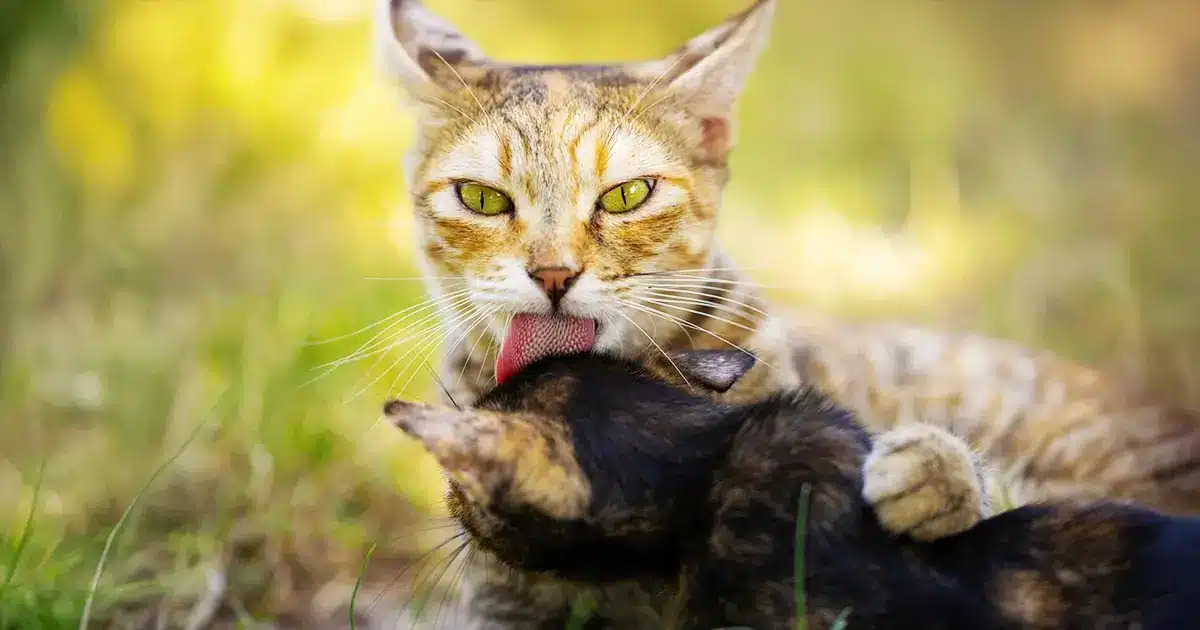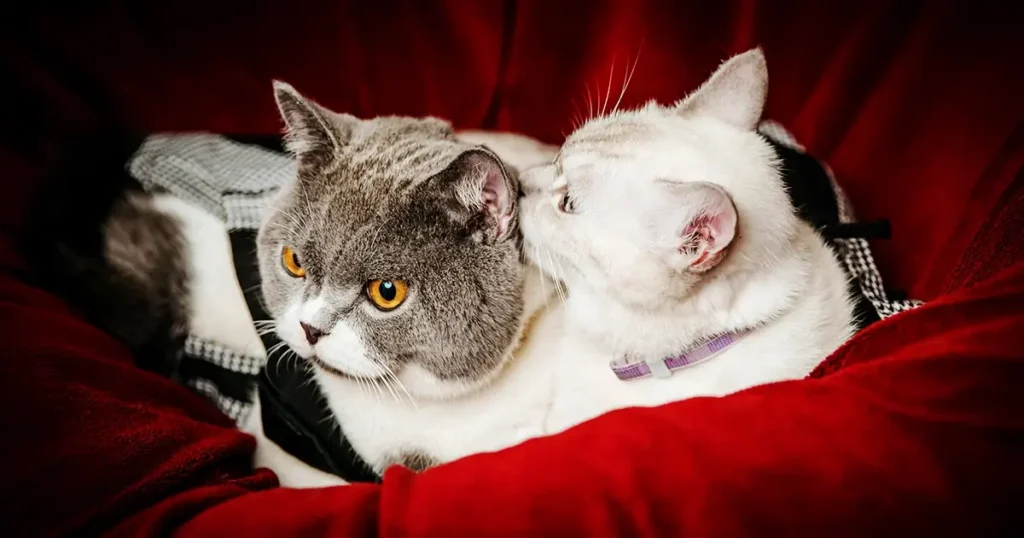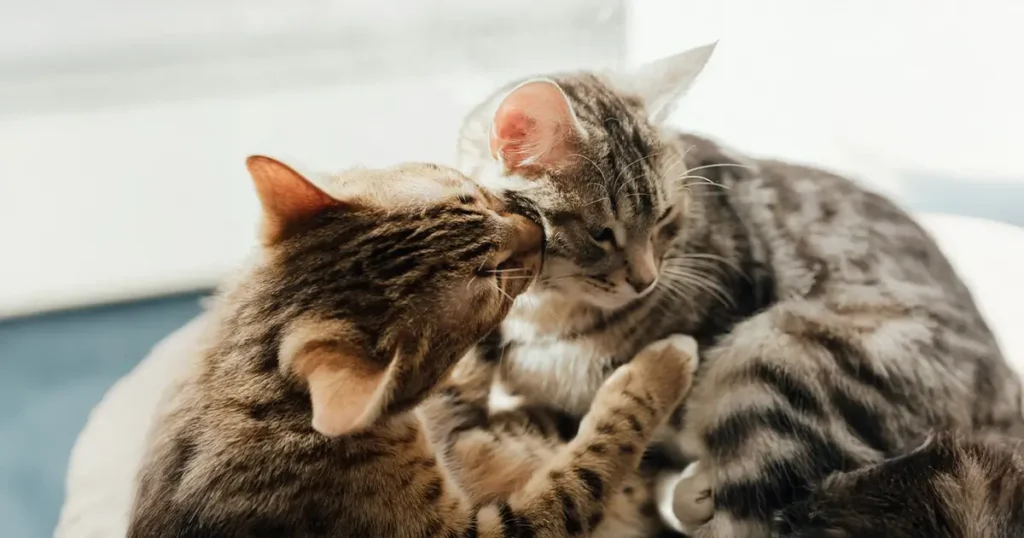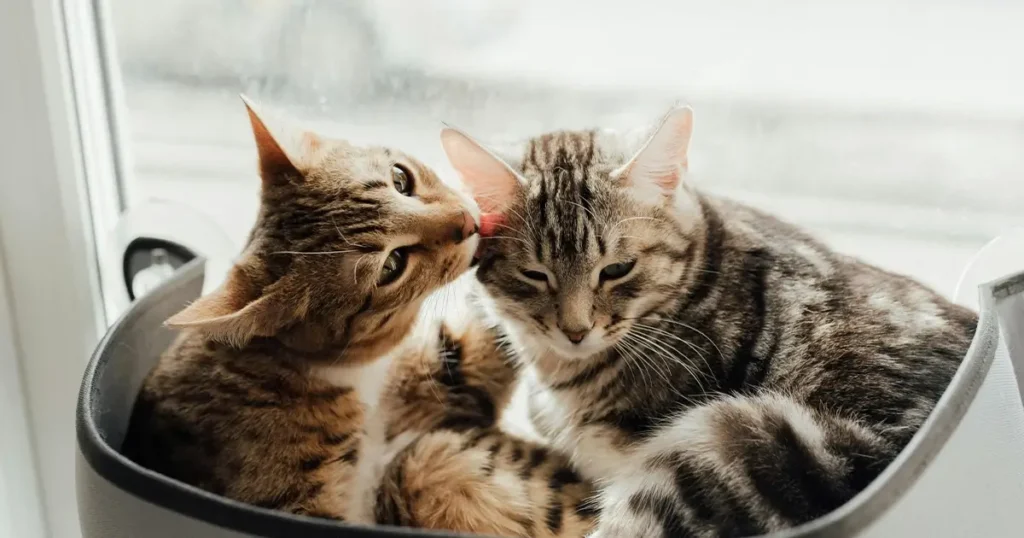Why Do Cats Lick Each Other? 5 Adorable Reasons

Why do cats lick each other? It’s a question every cat owner has pondered while watching their furry friends swap spit like it’s the hottest gossip in the neighborhood. One moment, they’re all love and grooming, and the next, someone’s getting a swat to the face. What gives?
As a pet expert (and someone who’s been refereeing feline drama for years), I can tell you that this behavior is about much more than keeping their fur clean. Cats lick each other for reasons that range from sweet and heartwarming to downright sassy.
In this article, I’ll break down 5 Possible Reasons Why Cats Lick Each Other, so you can finally decode the mystery behind those grooming sessions and maybe laugh a little along the way.

The 5 Possible Reasons Why Cats Lick Each Other

1. It’s a Way to Show Affection and Strengthen Bonds
Licking is one of the strongest signs of feline affection. Cats use grooming to build and maintain relationships, especially with other cats they trust. This behavior, called allogrooming, is their way of saying, “You’re part of my family.”
Do cats show affection by licking? Just as humans might hug or hold hands, cats groom their favorite companions as a way to strengthen their bond. If your cats lick each other frequently, it’s a sign they feel safe and connected.
2. To Mark Territory and Create a Group Scent

Cats rely on scent for communication, and licking helps them establish a shared group scent. When they groom one another, they’re essentially mixing their individual scents to signal that they belong to the same “team”
This behavior is particularly common in multi-cat households, where the scent mix reinforces their social hierarchy and reduces stress. It’s like the feline version of a secret handshake only much, much furrier.
3. It Establishes Social Hierarchy and Dominance
How do cats display dominance? Grooming can sometimes be about more than just affection it’s also a subtle way to establish rank. When one cat persistently licks another, especially around the head and neck, it’s often a sign that they’re asserting dominance.
While this isn’t necessarily a bad thing, it’s something to watch if one cat always seems to take charge. Pay attention to body language during and after grooming. If the licked cat seems uncomfortable or avoids the other, it could indicate a power struggle.

4. Relieving Stress and Comforting Each Other
Grooming also plays a role in reducing anxiety. When cats lick each other, they release endorphins, which help them feel calmer. This is particularly noticeable during times of stress, like after a trip to the vet or the introduction of a new pet.
This comforting behavior shows just how emotionally in tune cats are with each other. If you’ve noticed your cats grooming more during a big life change, they’re likely supporting each other through the adjustment.
5. To Help with Hard-to-Reach Grooming

Of course, licking is also about cleanliness. Cats are meticulous creatures, and helping each other reach those tricky spots (like behind the ears or under the chin) is an act of practical care.
However, if you notice excessive licking that results in bald spots or irritation, it could indicate a problem.
Is excessive licking bad for cats? It can be. Over-grooming may point to stress, allergies, or even skin issues, so it’s worth consulting a vet to rule out underlying health concerns.

Practical Tips for Understanding and Supporting Your Cats
- Encourage Positive Interactions: Provide spaces where your cats feel safe and can interact on their terms, like cozy beds or shared perches.
- Monitor for Conflict: Occasional spats are normal, but if grooming sessions often end in aggression, it might be time to reassess your cats’ environment.
- Show Leadership: Wondering how to show a cat you are alpha? Cats respect calm, consistent behavior. Avoid rough handling and instead use gentle guidance and a predictable routine to establish trust.
What It All Means
From affection to dominance, every lick means something. By watching and responding, you can support their relationships and have a happy home for all.
Cats are weird and wonderful and their grooming is just one of the many ways they talk. So next time you see your cats licking each other, remember they’re sharing more than just a bath, they’re sharing also trust, comfort, and connection.
- Next on your reading list: 6 Reasons Cats Lick Themselves When Touched
